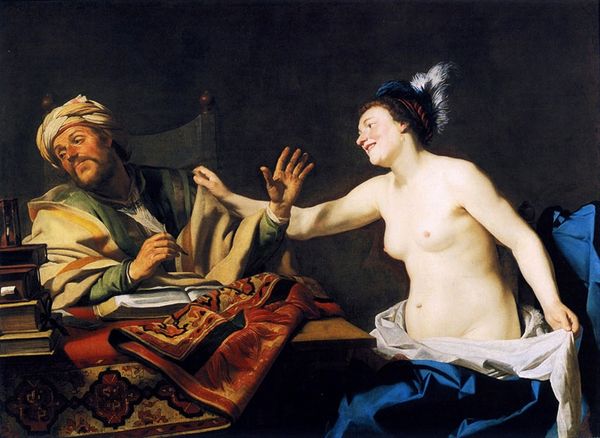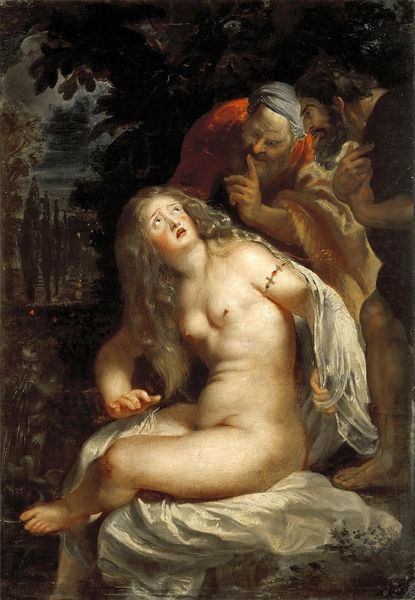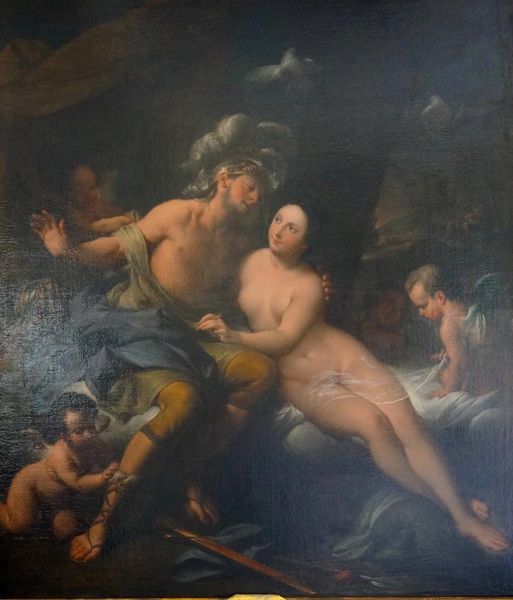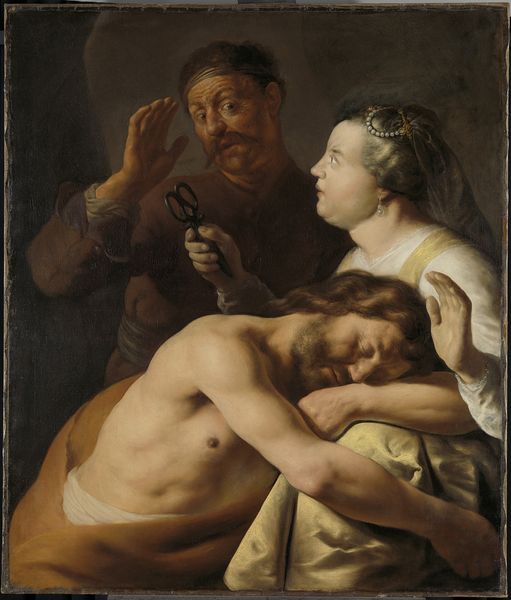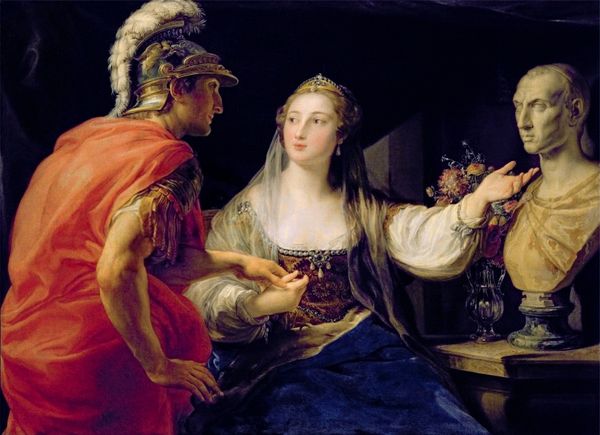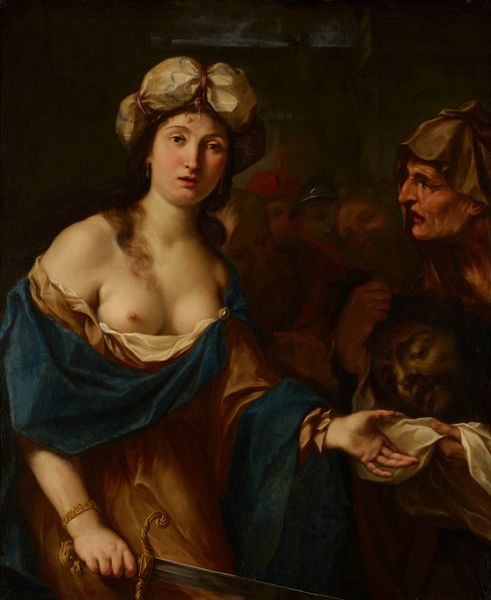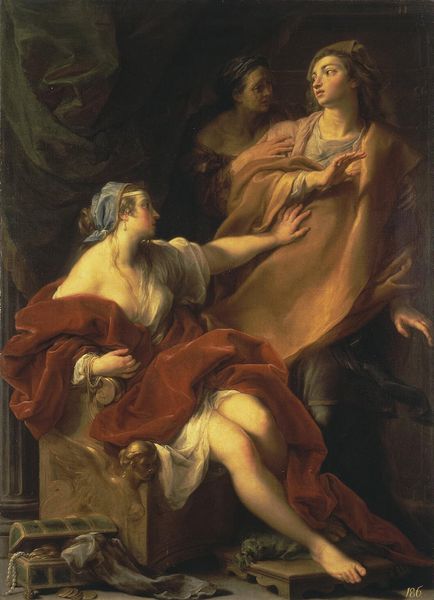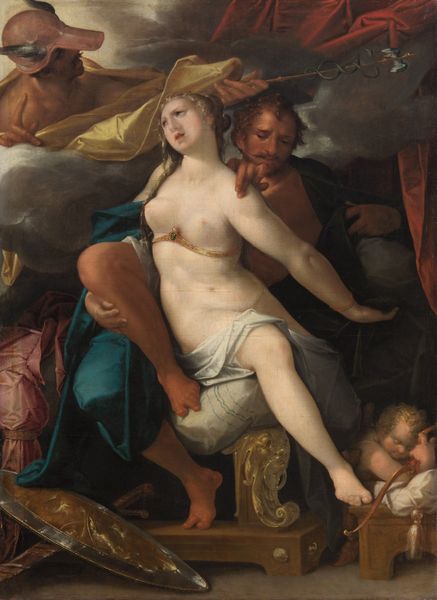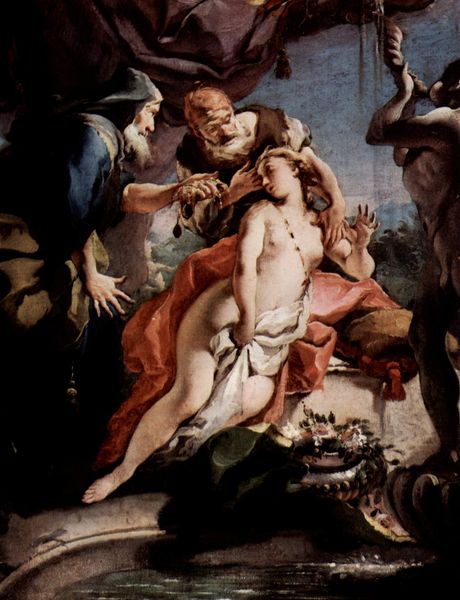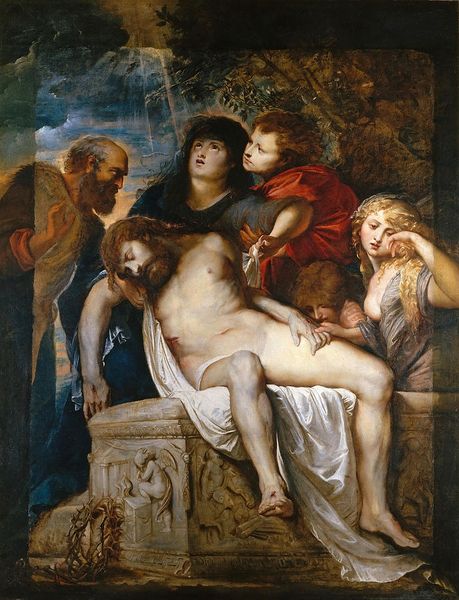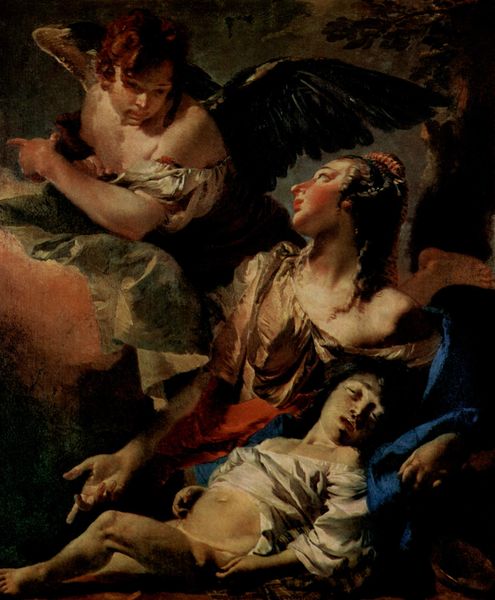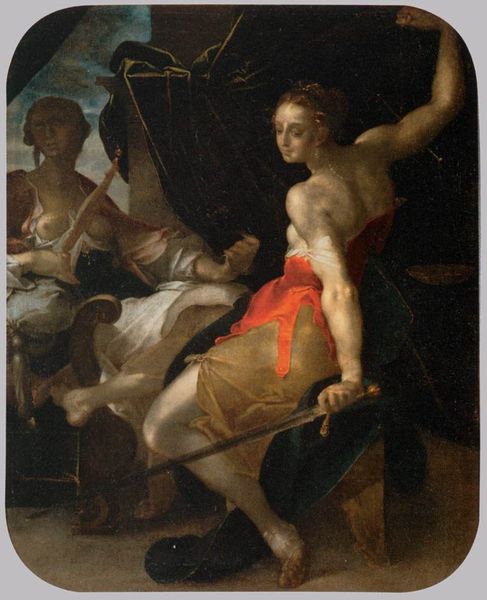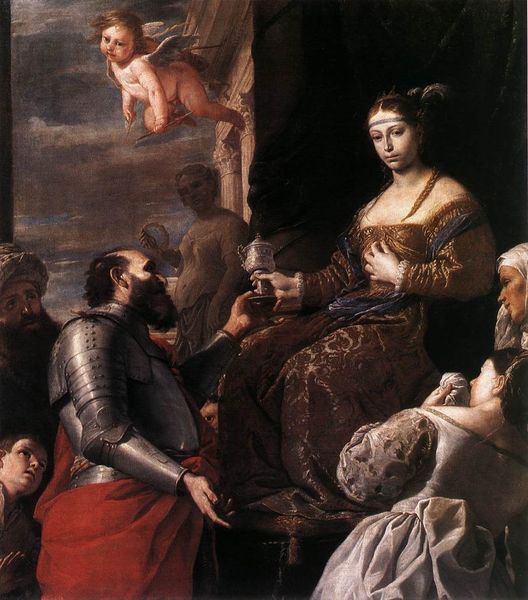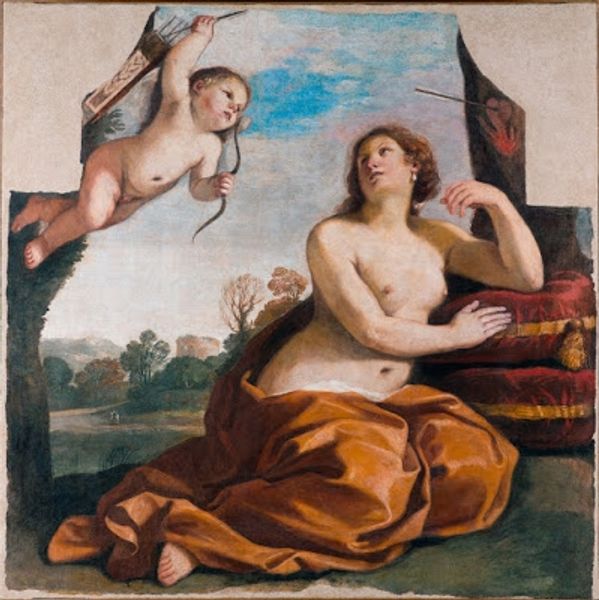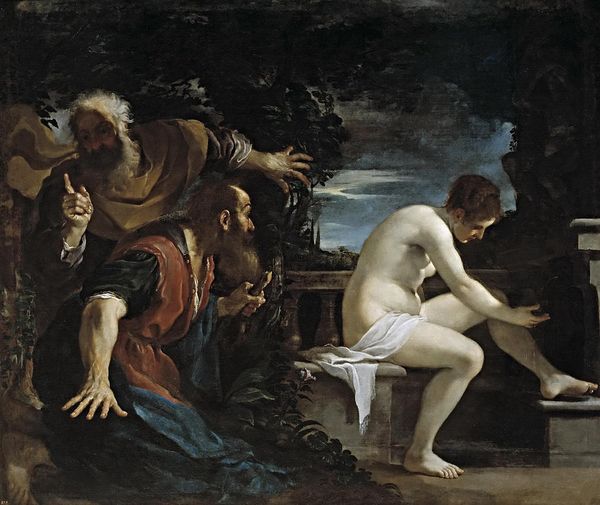
painting, oil-paint
#
portrait
#
baroque
#
painting
#
oil-paint
#
figuration
#
genre-painting
Copyright: Public domain
Editor: This is Gerard van Honthorst's "The Duet," painted in 1624 using oil on canvas. It's a wonderfully theatrical piece; the candlelight seems to almost leap off the canvas. What are your thoughts when you look at this work? Curator: The most compelling aspect for me lies in the deliberate display of wealth through materials. Observe the rendering of the fur coat, for instance, meticulously detailed to convey texture and volume. It signifies not just warmth, but status. And how is that illuminated and consumed? Editor: I see what you mean! The way the candlelight illuminates the fur really emphasizes its texture. Curator: Exactly! Honthorst exploits the light source not merely for dramatic effect, but to highlight the commodity and thus social currency represented by the fur. The artist, therefore, becomes a documentarian of the elite's material possessions and lifestyle, while inviting critique. It asks, at whose expense? Editor: So you’re saying the focus isn't just on the joy of music, but also on the social and economic implications behind even something like enjoying a duet? Curator: Precisely. How were pigments acquired? Who manufactured the canvas? Where did this fur come from, and who profited? What conditions allowed for this leisurely scene to even take place? We must investigate labor, materials, and consumption within the Golden Age. Editor: I hadn't considered those questions. I'm beginning to see how even seemingly straightforward portraits can be so rich in material context! Curator: Indeed! By scrutinizing the tangible elements within a piece like "The Duet", we unravel a far more complex narrative, of wealth, and inequality.
Comments
No comments
Be the first to comment and join the conversation on the ultimate creative platform.
